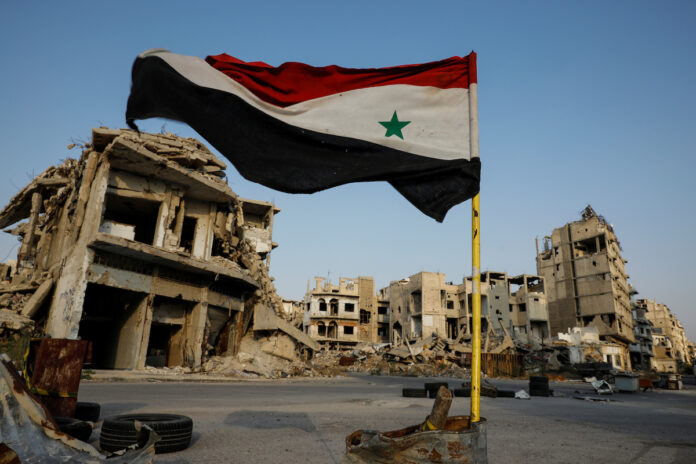Ahmed Matar Mohammed – Second Secretary
Introduction
Crises create opportunities and threats, but they are two faces of the same coin called the crises, and if you don’t make good use of the opportunity and employ it, it may turn into danger, also good threat management may turn it into opportunity, and this was the case of the Syrian crises, which provided many local regional and international forces with opportunity twisted into threats, threats became into opportunity, this was turkeys affair with the Syrian crises that saw it as an opportunity to help Muslim Brotherhood to have the power in Syria, and thus obtain an allied regime in Damascus.
However, Syrian President Bashar Al-Assad has allies and partners who would not allow him to overthrow, and after nearly 11 years of the Syrian war, Syrian President Bashar al-Assad is still at the head of the ruling political regime in Damascus, although his powers have been eroded by the war that produced local Syrian forces under the auspices of regional and international powers. Among these local forces that have emerged on the Syrian scene, which is the most cohesive and present on Syrian soil, is the Kurdish-majority Syrian Democratic Forces (SDF), which has been one of the most important reasons for the shift in Turkey’s policies and alliances in Syria, and in which the only constant was Turkish President Recep Tayyip Erdogan’s adherence to the safe zone project.
Therefore, in this paper, we will try to identify the reasons for Turkey’s military involvement in Syria and its objectives, is the safe zone, according to President Erdogan’s vision, really safe? And then analyze the possibility of normalization in Turkish-Syrian relations. And the possibility of a military operation by Turkey in northern Syria, especially in light of the Turkish military movements on the Syrian border after the Istanbul bombing last November of this year, Finally, we will try to extrapolate the American position on the safe zone, we will set out the implications of the safe zone project for Iraq in our conclusions, and we will set out in the recommendations a number of options that the Iraqi decision-maker can adopt.
The Syrian Kurdish Entity and Turkish Involvement in the War in Syria
Since the outbreak of the crisis in Syria in 2011, Turkey has been monitoring the situation in Damascus with goals and concerns on its agenda. The goals were to help bring the Muslim Brotherhood in Syria to power, prompting Turkish President Recep Tayyip Erdogan to support what he called “the revolution of the Syrian people against the murderous dictator, referring to Syrian President Bashar al-Assad.”
As for the concerns, they began to appear with the diminishing chances of the Muslim Brotherhood reaching power, and the erosion and collapse of the structure of the Syrian state, as one of its results was that the features of a political entity for the Kurds in Syria began to form with American support, which raised Turkish fears that the future of the emerging Kurdish political entity in Syria will affect the future of the Kurdish issue in Turkey, especially since the largest percentage of Kurds in the world live in Turkey, as the number of Kurds in Turkey is estimated at about (15) million people, and they constitute (56%) of the Kurds of the world, and (20%) of the population of Turkey lives mostly in the south of the country adjacent to the north of Syria, as the Kurds of Syria are concentrated, This threatens to achieve contact between the Kurds of Syria and the Kurds of Turkey, and to provide a base and safe haven for the Kurds of Turkey in northern Syria, especially in light of the geopolitical developments brought about by the war in Syria, as the borders of the Syrian state have become loose and controlled by entities supported by regional and international parties with their own projects in Syria.
Any Kurdish armed organizations, under any name, and with a depth of (30 km) in northern Syria. Not only did he present the plan and market it in the media, but he launched four military operations, “The Euphrates Shield” in Jarablus, north of Aleppo, in 2016, “The Olive Branch” in Afrin in Aleppo countryside in 2018, “the Peace Spring” between Tal Abyad and Ras al-Ain, east of the Euphrates, at the end of 2019, and “The Peace Shield” in Idlib in the spring of 2020.










